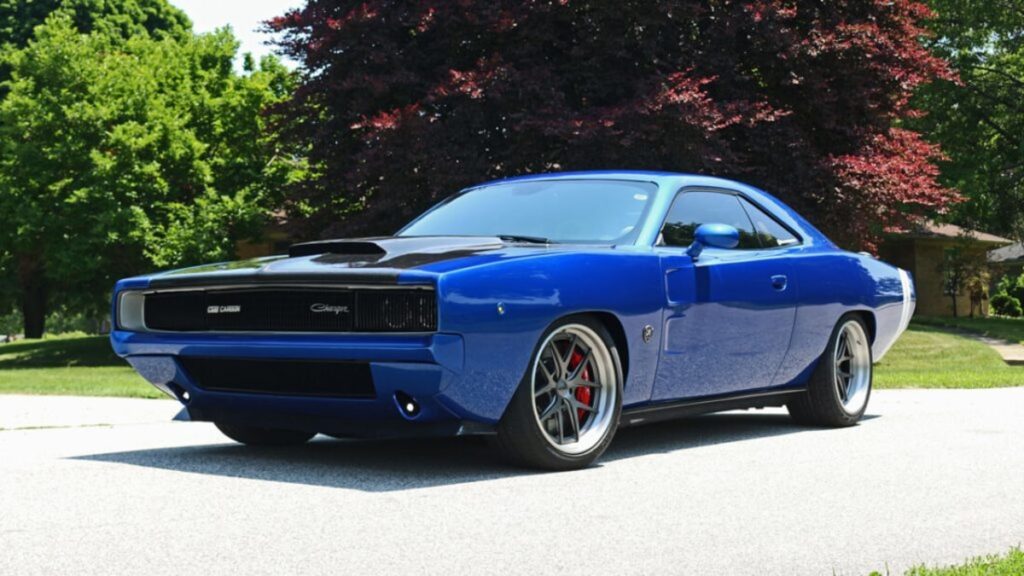Exomod's cool Deja Blu Dodge Challenger takes 1,500 hours to build

Exomod’s over-the-top creations blend classic car bodies with modern underpinnings and its latest builds on the Challenger Hellcat Redeye with the body of a 1968 Dodge Charger. Called Deja Blu, the full carbon fiber car comes in a new, exclusive blue color and will cost as much as a decent house in some places.
Starting with a 2022 Dodge Challenger Hellcat Redeye, Exomod adds a bespoke carbon fiber body. The supercharged 6.2-liter V8 got a Stage 2 upgrade, bringing output to 885 horsepower, and the car retains its eight-speed automatic transmission. Forgeline three-piece wheels stand in for the factory units, getting power to the ground with Nitto NT555 tires. Brembo brakes with six-piston calipers and SRT Competition Suspension round out the performance upgrades.
Inside, Exomod fitted Katzkin pearl leather upholstery, and the interior features several cosmetic carbon fiber accents, including in the door jambs. There’s more carbon on the chin spoiler, rocker panels, and rear diffuser, and the engine bay is customized with more carbon fiber. The company also introduced a new Deja Blu color for the build.
Though it has a slew of modifications, the car retains its Dodge factory warranty for five years or 60,000 miles. The build takes more than 1,500 hours, likely contributing to its astronomical $359,000 price tag. That price could be no big deal for the right buyers, and Exomod’s founder believes it’s got the right stuff to become a modern classic. “The 1968 Dodge Charger is perhaps the most iconic car from the muscle car movement of the late ‘60s. It represents raw power and aesthetics that appeal to every automotive enthusiast to this day,” founder and CEO Rick Katzeff said.
Exomod started its wild Franken-car projects after attempting to work with a pure classic car. The company said that a no-expense-spared build that used the best aftermarket parts still relied on technologies that were 50 or more years old and could be finicky and unreliable.



